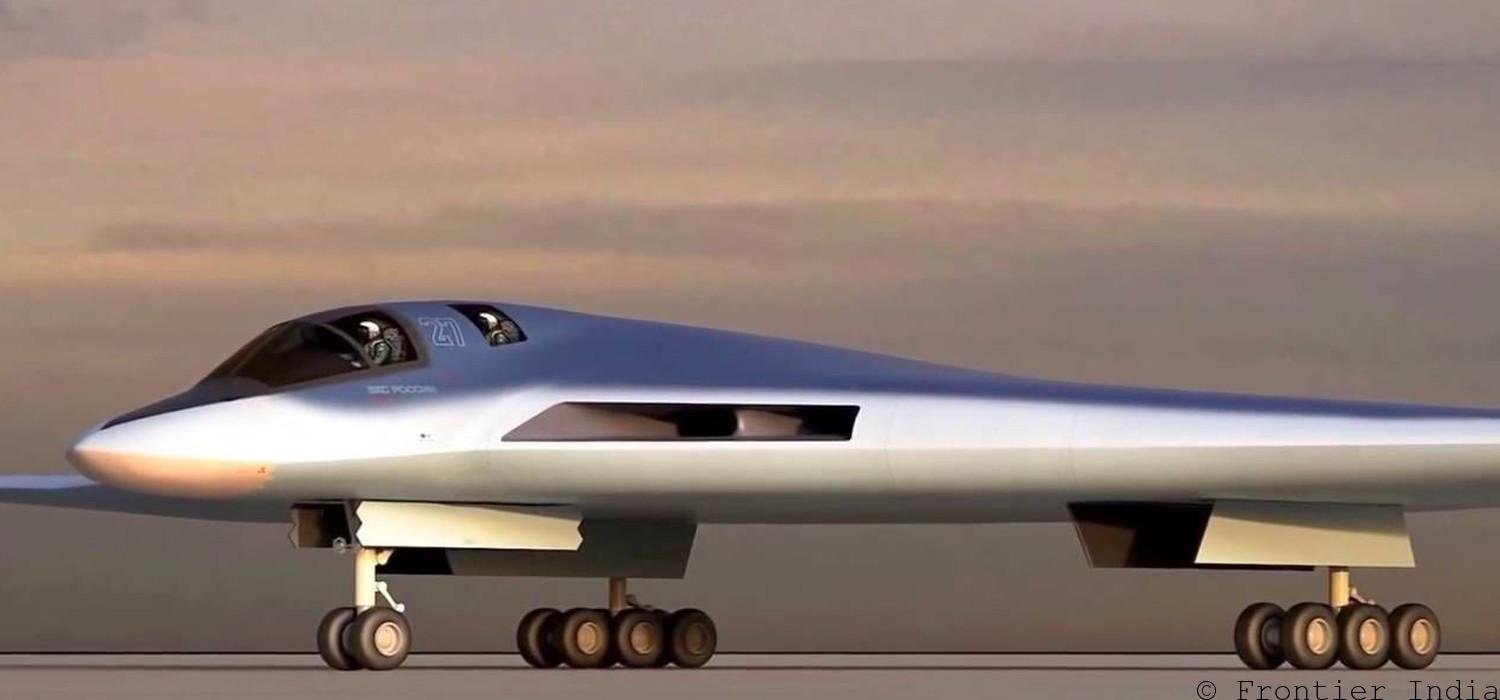Russia has declared an “on-schedule” progress of the under-development PAK-DA stealth strategic bomber. It has announced specifications similar to the B-21 Raider, which involves complete stealth and electronic warfare capability. This is a rare hint towards the aircraft’s system configuration.
The Russian Aerospace Forces operate the Tu-95 Bear, Tu-160 White Swan, or the Tu-22M swing-wing aircraft as the mainstay of their long-range strategic bombing and stand-off missions. The PAK-DA is expected to replace the Tu-95, while the Tu-160 and Tu-22 will be the other leading bombers.
Latest reports put the delivery schedule between the 2025-2030 timeline. After the American B-2 Spirit, the only operational ‘flying-wing’ type stealth bomber, the under-development PAK-DA, and the Chinese H-20 bombers would be the second and third such aircraft of the type.
‘Project On Time’
A report on TASS said that work on the “promising” long-range aviation complex (PAK-DA) is proceeding according to schedule.
“The aircraft parameters required by the military department will be maintained,” the report said, quoting unnamed Rostec officials. Rostec is the parent holding company of all Russian state-owned arms manufacturing Public Joint Stock Companies (PJSC).
The United Aircraft Corporation (UAC) is working on the PAK DA project in the manner approved by the schedule. “The aircraft parameters required by the customer as specified in the technical specifications will be maintained,” officials added.
This means the design, technology configuration, and performance specifications stipulated by the Russian Aerospace Forces (RuAF) have not been changed. Revisions in user specifications and staff requirements are one of the primary causes of delays.
This can be due to issues with initial planning that fail to consider general technology evolution that necessitates those to be incorporated. Sometimes, delays stem from unambiguous military concepts and a lack of consensus among military planners on how the weapon should perform. Other rare cases involve delays from the developers’ end, who have faced technical and engineering hurdles in developing complex and niche aerospace technologies.
Russian defense projects have followed the standard pattern of merely matching the US in having a weapon of the same class but not competing with it in core defining military technologies by following an overall independent path. In this regard, the Su-57 Felon is an example of Russia wanting to possess a fifth-generation fighter to challenge the F-22 or the F-35.
However, it has avoided pure stealth configuration that involves extremely costly stealth materials, paints, and coatings that add immensely to the maintenance and life cycle costs.
The Su-57 instead makes up for the lack of pure stealth or radar invisibility by having a larger payload, air-to-ground capability, more incredible speed, and extensive sensor distribution around the aircraft.
On the contrary, China has matched the US in the type, capability, and diversity of their stealth projects (J-20, J-31) and the core defense technology like radar-evading materials and sensor fusion computing.
A reason could be that Beijing is more likely to clash with the US, where the hawkish policy enjoys bi-partisan support from Democrats and Republicans.
Production Schedule
In early December 2023, Rostec revealed the creation of a “testing base” and “bench equipment” for testing the PAK-DA and its various systems and components.
The report quoted the head of the Defense and Security Committee of the Northern Fleet, Viktor Bondarev, saying that the start of deliveries of the long-range bomber into service is planned for 2025-2030 after testing.
If the lower limit of 2025 is taken for the first units to be rolled out in a limited series production (LSP) format, then it means the prototype should roll out by 2023, with ground testing to be concluded by the end of the year, and flight, weapons trials to be wrapped by 2024. The upper limit of a timeline could be the late 2020s, most likely after 2027 to 2035, which is a more achievable scenario.
It must, however, be noted that in August 2021, an industry source said that a “demonstration model” of the PAK-DA would be assembled by 2023. The remainder of the year will show if this timetable will be met.

Stealth & Electronic Warfare
“The PAK-DA is designed according to the ‘flying wing’ design,” which “widely uses” technologies and materials that reduce visibility (stealth technology).
The aircraft will be capable of carrying “existing and future strategic cruise missiles, high-precision bombs, hypersonic weapons, be equipped with the latest communications, electronic warfare equipment (and fly at) subsonic speeds.”
The mention of EW equipment suggests a capability similar to the B-21. Previous EurAsian Times reports had noted it was meant to be a data gathering and sensor fusion powerhouse with powerful electronic intelligence (ELINT) technologies meant to jam and break through enemy air defense networks and deliver standoff strikes before flying back.
But it can be said that the airframe panels can be made of pure stealth materials. Russia will have developed its radar-reflecting paints and alloys, apart from merely designing and angulating the airframe to disrupt electromagnetic emissions.
- The author can be reached at satamp@gmail.com
- Follow EurAsian Times on Google News